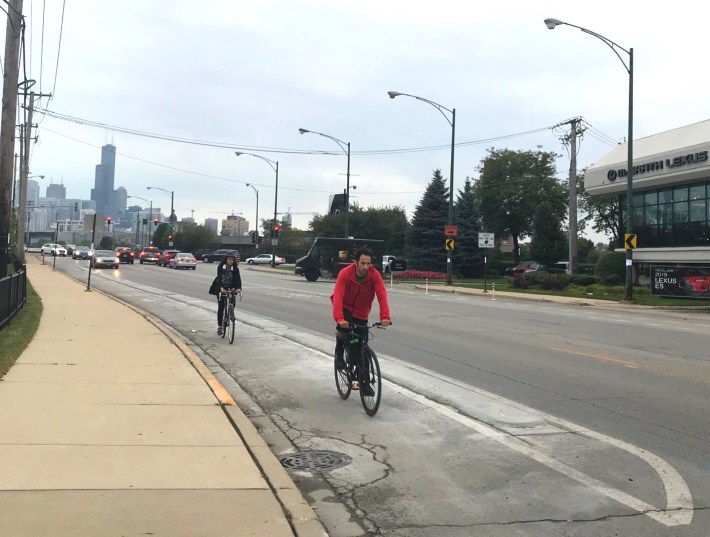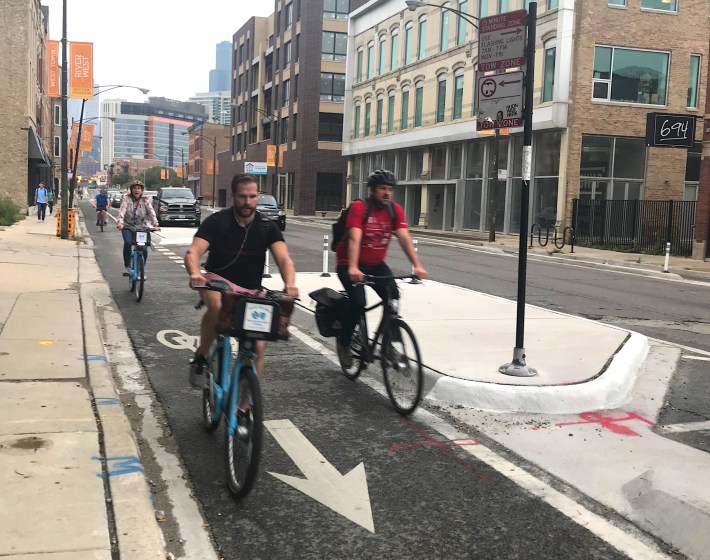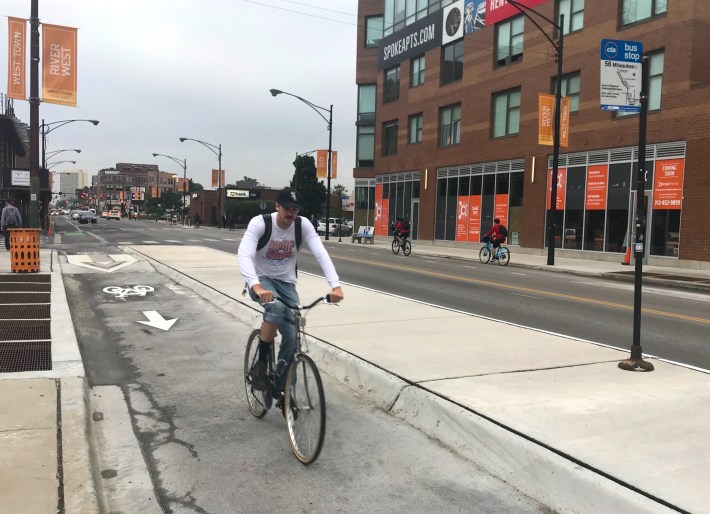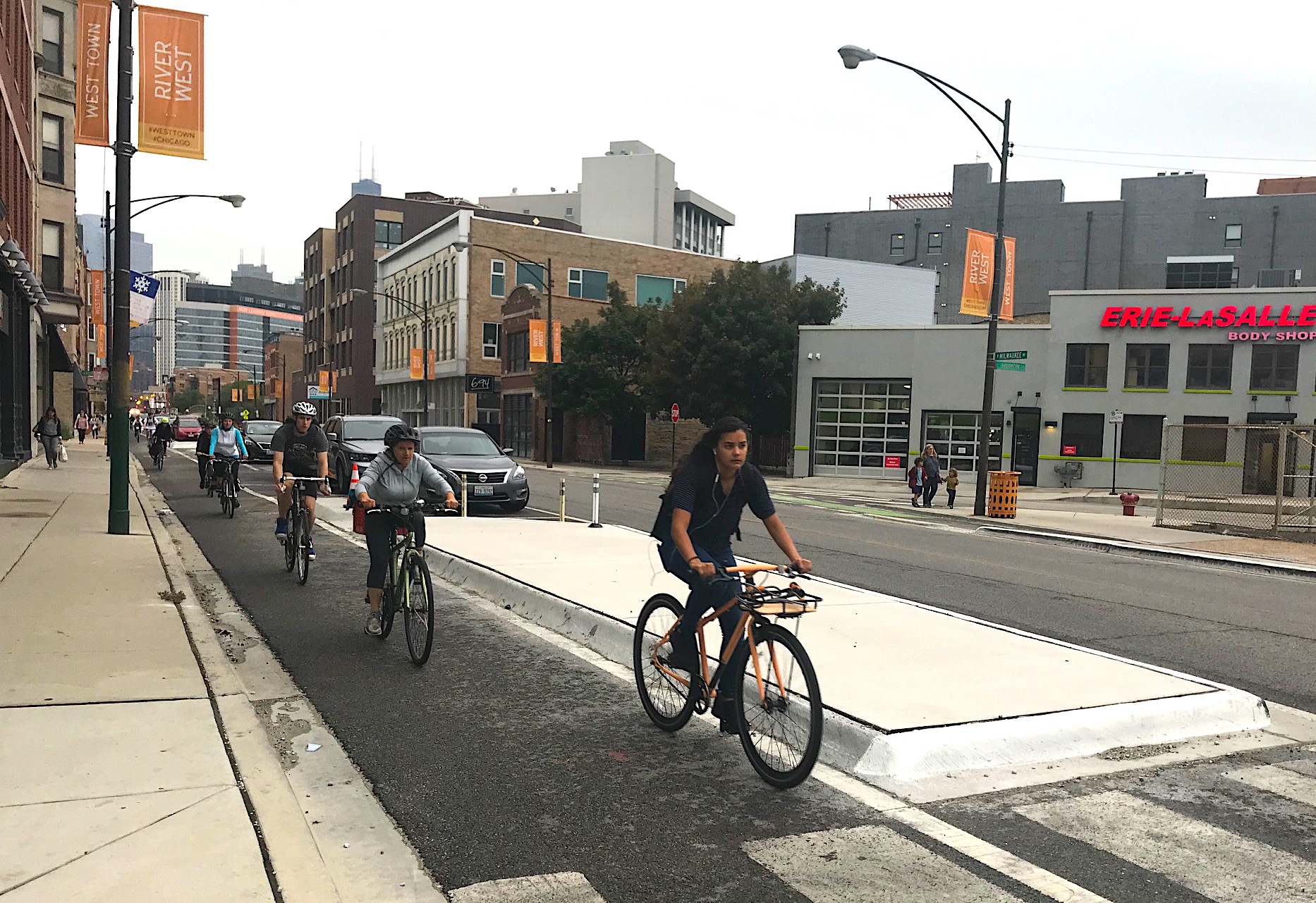"Build it and they will come," they say. While I'm not sure if the new concrete protection along the Milwaukee Avenue bike lanes in River West deserves all the credit, in all my years of bike watching on the "Hipster Highway," I don't recall ever seeing such massive amounts of two-wheeled traffic on Milwaukee as I did on this damp, gray fall afternoon. Surely having more physical protection from moving cars isn't hurting the numbers.
The Chicago Department of Transportation installed a short stretch of concrete protection on a few blocks of Milwaukee north of Chicago Avenue in summer 2015. This summer CDOT installed concrete curbs and islands on a nearly half-mile stretch of existing parking-protected lanes between Chicago Avenue and Ohio Street. The Department also installed concrete protection on a 0.7-mile stretch of existing protected lanes on Elston Avenue between Milwaukee and Blackhawk Street.

These projects are part of a $1.2 million package of recent federally funded Chicago bikeway improvements, which also include concrete protection on Dearborn Avenue between Polk and Kinzie streets downtown, new buffered bike lanes on Washington Boulevard in Garfield Park, and upcoming curbs on the Harrison protected lanes in the South Loop, slated for 2019 construction.
The construction on Milwaukee and Elston temporarily closed the bike lanes in one direction for a week or so at a time, and some cyclists have said that they would have rather seen the city build more miles of simple post-and-paint, parking-protected lanes than upgrade existing ones with concrete. But I'd argue that the benefits of hardscape are worth the extra cost.

Not only do cyclist get real, physical protection from traffic, even when cars aren't parked in the parking lane, but it's a permanent solution. The city often removes the flexible plastic posts from protected lanes to facilitate winter snow clearance, and in some cases the posts aren't been reinstalled promptly in the spring, or at all. Of course, it's important for the city to be diligent about clearing debris and snow from the concrete protected lanes as well, and make sure that water drainage isn't a problem after rainstorms.
In addition to the curbs between the parked cars and the biked lane (although there are some major gaps in the curbed sections), the concrete islands at the ends of the parking lanes at driveways and intersections ensure that drivers don't park on those areas, which helps make sure turning motorists and cyclists can see each other. Another nifty feature of the Milwaukee upgrade is a “floating” transit island at Carpenter for the southbound #56 Milwaukee Avenue bus, including a raised crosswalk to help CTA customers walk across the bike lane to the island.

Have you ridden the new-and-improved Milwaukee or Elston lanes yet? If so, let us know what you think in the comments.
![]()
Did you appreciate this post? Consider making a donation through our PublicGood site.





